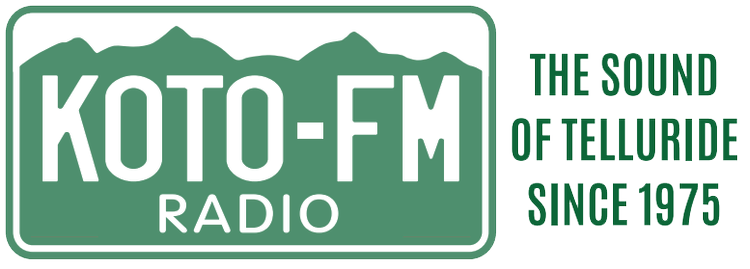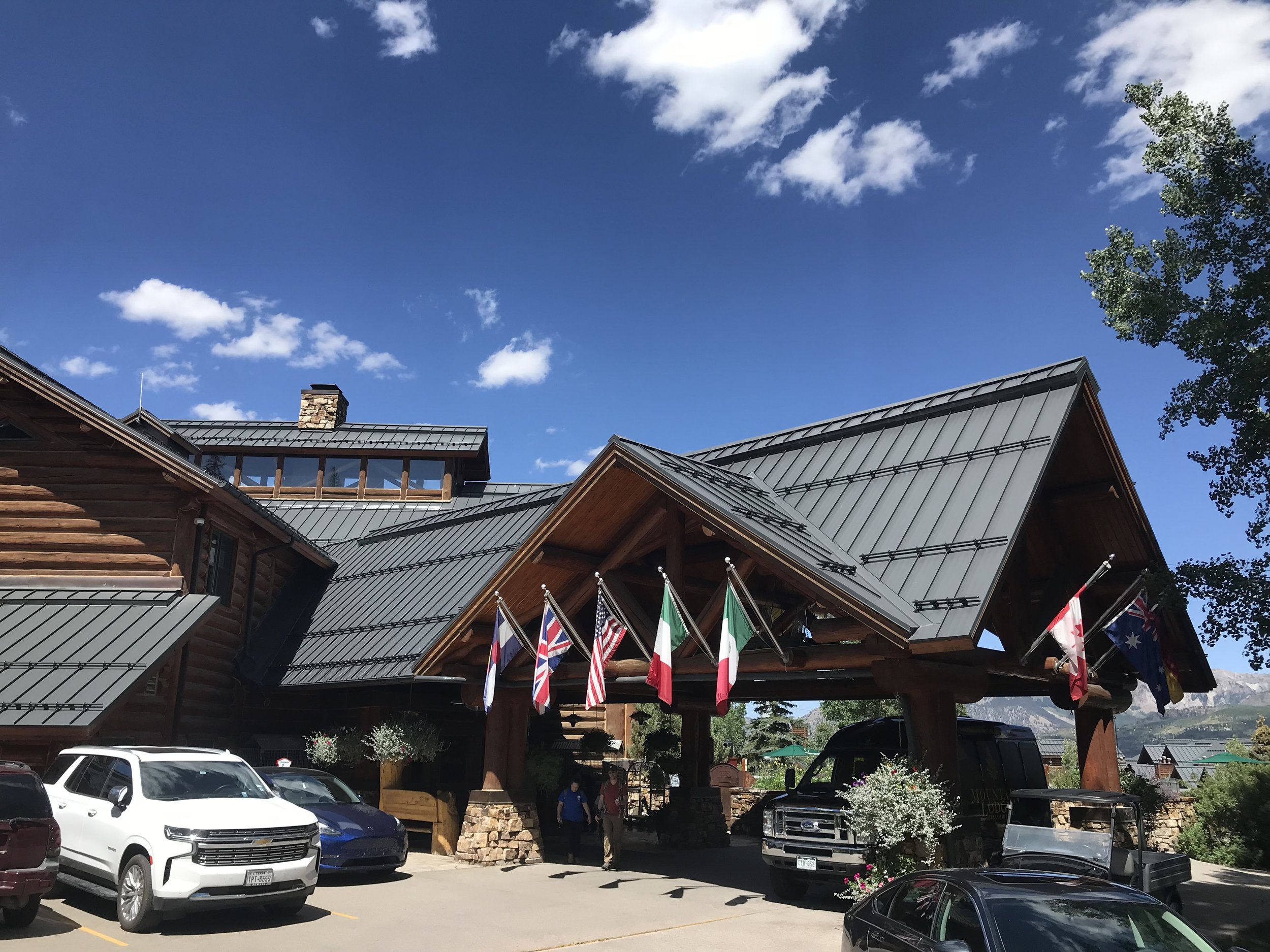This is the first story in a two-part series on wildfire preparedness and insurance access in the Telluride region. You can listen to part two here.
It’s a clear morning in the Ski Ranches Neighborhood, just west of Mountain Village, and Caryn Borden is walking the winding streets of her neighborhood. All around are aspen, fir, Engelmann spruce. The underbrush is rich and layered with summer grasses and meadow rue.
Borden gestures to the roadsides:
“And so last year, the area that we're walking through now [contractors with West Region Wildfire Council] did all the trees that were a threat to the roadways. So if there was a fire, you could get out. So little by little, we're trying to check off priority projects,” Borden says.
The West Region Wildfire Council. The Ridgway-based non-profit offers fire preparedness consultations for homeowners, communities, and landscape-scale projects across six counties on the Western Slope.
Borden moved to the Ski Ranches four years ago and sits on the Board of the Homeowners Association. In that time, wildfire readiness has become a priority.
“We just redid our wildfire plan,” she says, “and we're trying to communicate to homeowners things they can do to prepare, you know, just make their homes safer. So if there is a fire, hopefully it's not spreading everywhere, if we're all doing our part.”
Borden is one of many residents across our region who are beginning to wrestle with the impact, or potential impact, of fire on their homes, their livelihoods and their communities.
Wildfire, of course, has long been a concern across the West, but the issue is increasingly hitting close to home for property owners experiencing sudden changes in their insurance coverage. Area residents are beginning to report skyrocketing premiums and canceled plans.
National publications, meanwhile, report some insurance companies are pulling out of entire zip codes, and states across the West.
Clifford Hansen owns Latitude Insurance, a Telluride based broker with offices from Denver, to Aspen, to Big Sky. “They're all markets that are facing the same problems,” he says. “So in the beginning it was simpler. I remember telling people you should tell your clients not to put a wood roof on anything they build. And that was really [the beginning]. I could see the train coming down the tracks.”
That was five to six years ago, Hansen says. Now the issue has advanced. Take wood roofs. Certain structural elements, including a wood roof, act as fire risk amplifiers. Properties with those risk factors are becoming uninsurable. “We’re at a point where some companies will rate a wood roof if you replace it in the first year,” Hansen says, “but a lot of companies just won't write it.”
As communities awaken to the intersecting issues of insurance and fire, they’re responding. And it begins with the roof. Take the Town of Mountain Village.
“At one point, the town required some areas to have Cedar shake roofs, so we have a huge amount in the town of Mountain Village. It's a very thin cedar shingle basically, and they're, they're layered on that roof and it's highly, highly combustible,” explains Village Community Development Director Amy Ward.
The cedar roof requirement was originally for aesthetic reasons in the idyllic cul-de-sacs of the Village. But as times have changed, so have priorities, and Ward says, a roof replacement “is the biggest thing that you can do to protect your home if you have a cedar shake roof. So you start there, you start with the roof. And then beyond that, you want to do defensible space work around your home if you’re adjacent to a forested area.”
The Town offers incentives to perform such work. It waives any building fees, up to $25,000, on projects which replace cedar shake roofs with a fire resistant material. Since beginning in 2017, the program has been highly successful, waiving some $650,000 in fees on over 150 replacements. The Telluride Mountain Village Owners Association began partnering on the program in 2019, and they hope to continue until all cedar roofs in the Village have been replaced.
One major project was completed at The Mountain Lodge. The hotel was built around 2000 — opening under a cedar roof. Manager Steve Togni says it was increasingly hard to source insurance for the property.
“So instead of playing that game and instead of continuing to fight through what was difficult from an insurance standpoint, we decided to move forward with a [metal] roof,” he says.
Due to a lapse in funding in the Town’s Cedar Shake Program, Mountain Lodge ended up paying all the building fees associated with the replacement, but Togni maintains it was worth it nonetheless.
Mountain Village also funds a Defensible Space Program which offers homeowners funding to re-work their landscaping to better prepare for fire. So far, those improvements have been a tougher sell.
“I think homeowners are reluctant because we all have an idea in our head about what a traditional landscape looks like and it often involves shrubbery and flowers right up to edge-of-home,” Ward says. But fire ready landscaping, she says, “doesn't have to be the worst case scenario when you do it right.”
Caryn Borden’s home in the Ski Ranches. Borden completed fire mitigation work on her property last summer, with a grant from the West Region Wildfire Council. While they removed a large number of coniferous trees, Borden says crews were able to leave the Aspen.
Buy-in from residents is slowly increasing, Ward reports. Back in the Ski Ranches, Borden shows me around her own home. She did mitigation work last year with consultants from West Region Wildfire, and the forest, she says, is thinner:
“We had three awesome trees over here, but they took those out,” Borden says, gesturing around her property. “They took a ton out over here. They were really knowledgeable. They were awesome.”
Borden’s motivation was not only to protect her home in the event of wildfire, but to keep her biggest investment insured.
“When we're making these decisions, we're just trying to be, again, proactive like other people. And I think [concern] is more in play than it was last year, because it would be hard if none of us can get insurance. It's like, ‘what do you do?’” she says.
As wildfires continue to intensify across the West, will such small individual and community efforts be able to keep insurance options open?
Part two of this series takes a deeper dive into the question, and the uncertain future of insurance in the region.


